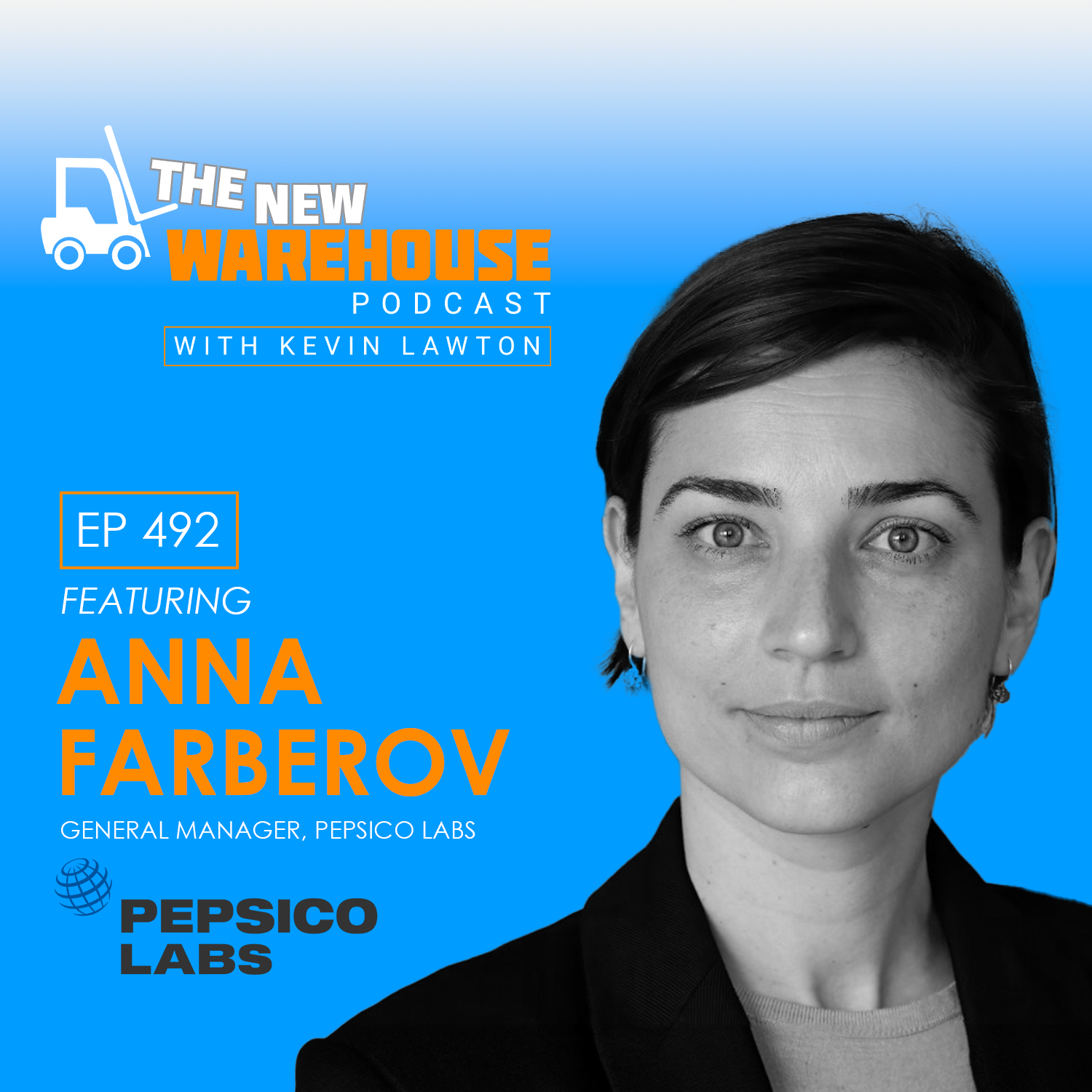
492: Driving Innovation in Supply Chains with PepsiCo Labs
Today’s episode of The New Warehouse Podcast features Anna Farberov, the General Manager at PepsiCo Labs. Anna is at the forefront of technological innovation at PepsiCo, exploring and implementing cutting-edge solutions to enhance efficiency across their supply chain. In this episode, Anna delves into the inner workings of PepsiCo Labs, their approach to innovation, and world-changing technologies that are revolutionizing their operations from seed to shelf.
The Integrated Value Chain of PepsiCo
PepsiCo’s operations span the entire supply chain, making their approach to supply chain innovation uniquely comprehensive. Anna explains, “We start with what we call ‘seed to shelf.’ We own the seed, we grow the potatoes, and we use our own trucks to ship them.” This vertical integration means that PepsiCo controls every step, from agriculture to direct store delivery, ensuring quality and efficiency throughout.
Anna highlights the sheer scale of their operations, noting that small changes can lead to significant impacts. “Imagine if we find a way to grow potatoes better or use less water in our irrigation. Even improving the throughput of our warehouses can have a huge impact,” she says. This comprehensive control allows PepsiCo Labs to target innovations that can deliver substantial benefits across various touchpoints in their supply chain.
Taking a Pragmatic Approach to Innovation in Supply Chains
PepsiCo Labs takes a pragmatic approach to innovation in supply chains, focusing on solving specific business problems rather than chasing the latest tech trends. “We look at what are the biggest problems in the business, go to the business experts, and ask them what we can solve,” Anna explains. This problem-first strategy ensures that the innovations they adopt are both relevant and impactful.
One example Anna shares is their approach to eCommerce warehousing. “We needed a solution for eCommerce that required a large number of SKUs moving fast in a small footprint. This led us to micro-fulfillment centers with automated storage and retrieval systems,” she explains. By focusing on the specific needs of their eCommerce operations, PepsiCo Labs was able to implement solutions that improved efficiency without compromising product availability.
Balancing Technology with Human Elements
While automation and technology are crucial, Anna emphasizes the importance of centering supply chain innovations around the human element. “You can’t just throw a lot of tech or robotics at a warehouse and expect it to happen. You need to center it around the human element and bring the people with you on the journey,” she states. This approach ensures that technological advancements enhance rather than disrupt the work environment for PepsiCo employees.
Anna shares a practical example: “We’ve implemented a scanning solution that can capture multiple labels in one photo, reducing the repetitive task of scanning labels individually.” This not only improves efficiency but also enhances the work experience for employees by eliminating tedious tasks.
Key Takeaways
- PepsiCo controls its supply chain from “seed to shelf,” allowing targeted innovations with significant impacts.
- Focusing on solving specific business problems ensures relevant and impactful technological adoption.
- Centering innovations around employees enhances efficiency while improving the work environment.
Listen to the episode and leave your thoughts in the comments.
Guest Information
To learn more about Anna Farberov and PepsiCo Labs, visit PepsiCo Labs’ website or connect with Anna on LinkedIn.
For more information about innovation in supply chains, check out the podcasts below.
Gen AI in the Warehouse at Momentum 2024
Episode 489: Elevating Warehouse Safety Management with Elokon Group

564: Mastering Omnichannel Logistics with Caraway Home » The New Warehouse
[…] 492: Driving Innovation in Supply Chains with PepsiCo Labs […]